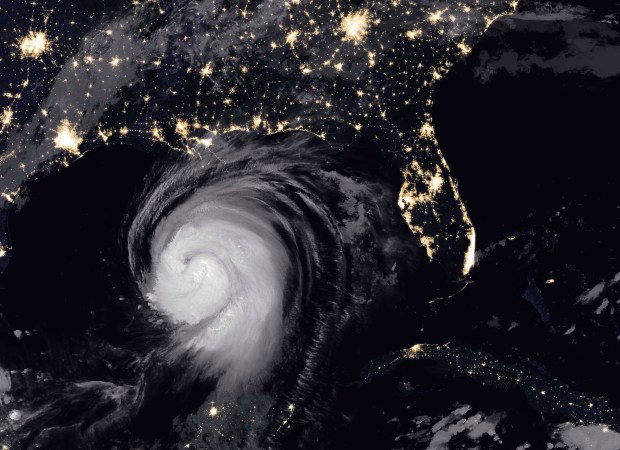As we move into the new year, it’s easy to see that things changed for a lot of people in 2020.
Alongside a deadly pandemic, 2020 also delivered reminders of the severity of the climate crisis facing the world — droughts, floods, heatwaves, wildfires and hurricanes continued to disrupt life for communities across the globe, in addition to and in spite of the challenges brought by Covid-19.
Images of some of these climate events — visually stunning and sobering in equal measure — have been captured by NASA’s fleet of Earth-observing satellites and instruments found on the International Space Station.
Unprecedented wildfires
On this day last year, NASA’s Moderate Resolution Imaging Spectroradiometer captured images of thick, tan-colored smoke drifting across Southeastern Australia, taken as the country was ravaged by one of its worst wildfire seasons on record.
Fire season in Australia is always dangerous — but conditions were unusually severe in 2020, fanning the flames and making firefighting conditions particularly difficult.
Experts say climate change has worsened the scope and impact of natural disasters like fires and floods — weather conditions are growing more extreme, and, for years, and fires have been starting earlier in the season and spreading with greater intensity.
2020 was also a year to remember for many residents of US West Coast states, where deadly wildfires in California, Oregon and Washington forced tens of thousands of people into shelters amid the coronavirus pandemic.
In the image below, captured on September 9, a thick blanket of smoke can be seen along the West Coast,
“Climate and fire scientists have long anticipated that fires in the U.S. West would grow larger, more intense, and more dangerous. But even the most experienced among them have been at a loss for words in describing the scope and intensity of the fires burning in West Coast states during September 2020,” NASA said.
Several of this year’s fires were triggered by lightning, but extreme conditions including record-breaking temperatures, dry air, fierce winds and drought caused the fires to wreak havoc on nearby forests, and, eventually, homes.
The Visible Infrared Imaging Radiometer Suite (VIIRS) and the Ozone Mapping and Profiler Suite (OMPS) sensors, found on the NOAA-NASA Suomi NPP satellite, collected daily images of thick plumes of aerosol particles blowing throughout the US West, which, according to NASA, was on a scale that satellites and scientists rarely see.
Drought
Though this picture seems to show a lush and green oasis, the image, captured by NASA’s Landsat, actually reveals the parched river basin of Argentina’s Paraná River.
An extended period of unusually warm weather and drought in southern Brazil, Paraguay and Northern Argentina caused the river to drop to its lowest levels in decades. Not only has the drought contributed to an increase in fire activity in the surrounding delta and floodplain areas, but it has also affected local businesses and residents, with ships grounded and low water levels costing millions of dollars in the grain industry.
Human activity has been linked to the world’s risk of drought since the start of the 20th century: Greenhouse gases generated by power plants, farming, cars, trains and human activities in general have influenced the risk of droughts, and experts predict that drought linked to climate change will worsen.
Hurricanes
Hurricane Laura, one of the 10 strongest hurricanes to make landfall in the US, swept through southwestern Louisiana in August, killing at least six and leaving a wide path of destruction it its wake.
The 2020 Atlantic hurricane season was the most active on record, and many of the storms that slammed into the Gulf Coast, Central America and the Caribbean last year showed signs that they were supercharged by global warming.
In the image above, captured by the VIIRS on the NOAA-20 satellite, the storm looms off the US coastline, highlighted by the darkness of night, while clouds are shown in infrared using brightness temperature data, and overlaid onto imagery showing city lights.
The-CNN-Wire
™ & © 2021 Cable News Network, Inc., a WarnerMedia Company. All rights reserved.
